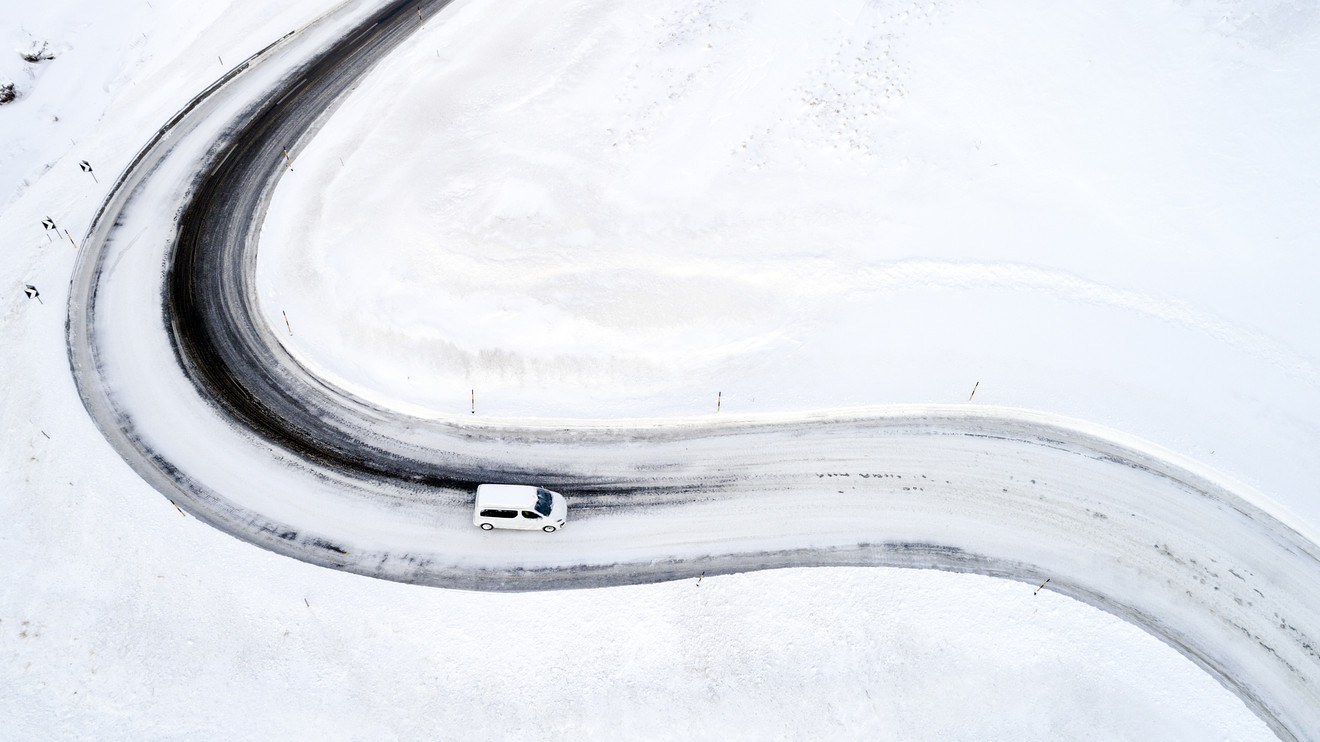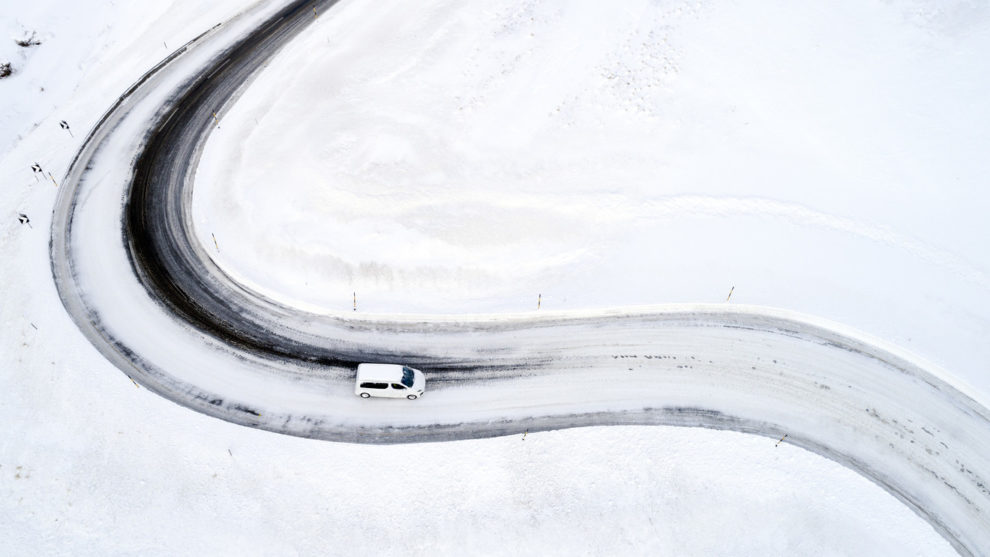
Winter driving is dangerous and can be terrifying, even for well-seasoned motorists. The American Automobile Association’s Foundation for Traffic Safety says snow-covered roads, as well as roads coated with ice, slush or water, account for nearly 500,000 vehicle crashes and more than 2,000 road deaths each winter.
“When we hit the winter months, especially as we enter the holiday season, we are in a rush. There is holiday shopping, there are places to go. You start to see an increase in people becoming more erratic in their driving behavior because they are in a rush for the holidays. You throw snow and ice on top of it, and it becomes a potential disaster,” said Dave Phillips, senior public affairs specialist at State Farm Insurance.
Listed below are 20 winter-driving tips to reduce the probability of an accident.
Stay home: If the weather is bad, stay home, only go out if necessary.
Remove snow, ice: Carry a brush to remove snow on the vehicle’s roof, hood, trunk lid and all windows before driving. Use a scraper or a credit card if necessary, to remove ice on the windows. Before you clear off the windows, start the car, set the air flow to defrost, the fan speed to maximum and the temperature to high. The goal is for the driver to have an unobstructed view in all directions.
Decrease speed: Winter driving is all about slowing down, giving yourself plenty of distance between vehicles in front and to the side of your vehicle. Lower your speed to account for poorer traction. A vehicle’s tires will slide on snow and ice so gently press down on the brake pedal to stop. Your tires will spin when accelerating so gently press down on the accelerator to go. Remember, bridges and overpasses freeze first.
Eliminate distractions: There are always distractions that come into play as part of everyday driving — the temptation to speak on the cellphone, a heated argument with a child, a humorous conversation with members of your carpool.
“But you really need to focus your attention more so on what is going on out that windshield when the weather is bad,” Phillips said. The risk for an accident greatly increases when snow and ice cover the street. “You have to be more cautious and vigilant. You also have to be aware of everybody else out there on the road in front of you and peripherally, people who may not be practicing the same (safe) driving principles you are using.”
Don’t fall for the 4-wheel, all-wheel drive myth: Phillips describes the misguided belief of some 4-wheel and all-wheel drive drivers this way:
“You can get a false sense of security thinking that because I have a 4-wheel drive (or all-wheel drive) vehicle I am safer. I have extra traction and extra traction is implied as extra safety,” Phillips said. “Hence I am going to speed, or I am not going to pay as close attention as I would in a sedan that doesn’t have those features.”
See: Should you buy a car with all-wheel drive?
What those drivers fail to realize is their SUV’s steering, braking, cornering and general maneuverability on snow, slush and ice is no better than a front- or rear-drive sedan. Simply slow down when the weather is bad no matter what type of vehicle you are driving.
Fill ‘er up: You don’t want to run out of gasoline if you end up stuck for hours in bumper-to-bumper traffic during a snowstorm. Follow this rule during the winter: When the tank is half empty, fill it up.
Resist the impulse to “floor it”: You probably will get stuck in snow this winter. Place sand or cat litter under the drive wheels if you get stuck. Straighten the wheels and accelerate slowly. Do not spin the tires because you likely will dig deeper into the snow, making it more difficult to move on.
Train your teenage drivers: There are a few exceptions but probably 100% of us learned the basics of driving on dry pavement. Take a new driver to a parking lot that is covered with snow to demonstrate braking, steering, accelerating and decelerating. Do this before that person hits the slippery streets on their own, Phillips said.
See: 8 subcompact cars with top safety ratings in 2019
Respect snowplows: The snowplow driver is focused on clearing the roadway in front of him. At the same time, he may be on the radio getting instructions from his superintendent. His peripheral vision might be obstructed by the flying snow and the truck’s big snowplow. He may not see your vehicle. “You need to be very cognizant of what they are doing,” Phillips said.
Watch for deer: Keep an eye out for changing weather conditions and deer. November is the No. 1 month for vehicle collisions with deer, followed by October and December. “The erratic behavior of deer unfortunately is happening” during the snow season, Phillips said.
Black ice danger: The pavement looks wet but it is actually ice covered. “Black ice” is the term used to describe this condition. During the day the ice and snow may thaw, but as the temperature drops in late afternoon or evening, the water may turn to ice on the roadway. “Pay attention to changing temperature conditions,” Phillips said. Many vehicles post the outside temperature on the instrument panel display or elsewhere in the vehicle—as it gets close to or below freezing, beware.
Don’t use cruise control: The roadway may be wet, but there still might be black ice or unplowed snow on the highway ahead. These conditions could result in losing control of the vehicle on cruise because the system may not react as quickly as you can if you feel a loss in traction.
Check wiper blades, windshield washer fluid: Streaky wiper blades should be replaced; your vision through the windshield will not get better until the blades are replaced. Also, frequently check the windshield fluid; use a liquid that does not freeze and keep a gallon of the fluid in the vehicle.
Clean headlights, taillights: Lights get quickly covered with snow, ice and slush. Use a rag, tissue, paper towel or a newspaper to clean each light. As a driver you want to see as far as possible ahead and you want drivers to see you, too. A headlight’s or taillight’s visibility can be reduced by over 50% if the lights are covered with winter grime.
Check tires: Check tires monthly to determine that each tire is properly inflated and that each has a sufficient amount of tread. “You are going to see diminished performance in traction (and) the stopping distance will take longer” if there is very little tread remaining on the tires, said David Bennett, manager of AAA’s repair systems. “As you get into the ice and snow, you want to make sure that you have good traction, and that starts with your tires.”
Don’t forget to check the spare: Don’t be caught this winter with a flat spare tire. Check the air pressure monthly and carry a portable air compressor.
Make sure your tire repair kit is current: Some automakers have replaced the spare tire with a tire repair kit. The kit consists a small compressor, hose and a bottle of thick, sticky sealant that is forced through the value into the tire. AAA recommends checking the kit’s expiration date and replacing it when necessary. Some kits should be replaced every four years.
Keep that back window clear: Safe driving includes keeping all windows clear of ice and snow. Also, make sure the insider rear window glass is clean: It can take longer to defrost ice and snow if the rear glass is dirty. Also check to see if the rear-window defroster is working. Be careful when cleaning the glass to avoid damaging the defroster wires.
Don’t block radiator with cardboard: AAA’s Bennett says, don’t do it. Some drivers in the snowbelt regions place a large piece of cardboard in front of the vehicle’s radiator. The purpose is to increase the temperature of the coolant flowing through the engine and radiator. This in turn increases the temperature of the air flowing through the heat exchanger, giving passengers a toasty environment.
Don’t miss: The top trends in automobile technology to look for in 2020
“That is not a great idea because (cardboard) prevents airflow from coming across the radiator which could cause the engine to overheat,” Bennett said. If the driver forgets to remove the cardboard when the outside temperature rises above freezing, there could be serious, expensive engine damage, leaving you stranded on the highway.
Carry emergency supplies: Plan for the unexpected and pack nonperishable food, bottled water, blankets, flashlight, cellphone, cellphone battery, first-aid kit, air compressor, tire pressure gauge, small shovel, jumper cables, extra jacket, gloves and your prescription drugs. A bag of Kitty Litter or sand that can be used for traction under a tire is also a good idea.
This story originally ran on KBB.com.






